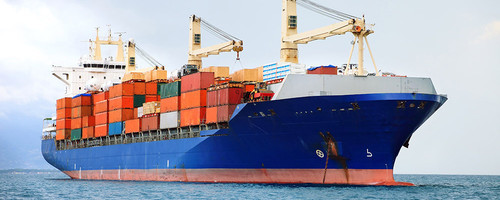Ocean freight, also called simply freight, usually relates to shipping large and heavy bulk cargo through the sea. It is one of the most ordinary means of transport, making up for more than 80% of globally exported goods. Large shipping containers are usually used to deliver supplies, which are loaded onto containers at ports worldwide.
Ocean transports like maadho ocean services play an active and meaningful role in the supply chain, from transporting massive volumes of CPGs to delivering vehicles and electronic goods.
Ocean Freight Shipment Services:
The central part of maadho ocean services or other ocean freight is shipped in metal shipping crates on container ships, many of which can bring over 18,000 containers. The two most frequent container sizes are twenty-foot equivalent units (TEU) and forty-foot equivalent units (TEU) (FEU). Cargo ships are often used to transport items that cannot be transported in boxes, such as large quantities of chemicals and heavy equipment, via ocean freight.
Ocean freight is typically the most cost-effective but relatively slow mode of transportation for shipping broad product quantities over long distances. To reach the most cost-effective shipping rate, large quantities of small shipments are frequently combined into one container.
Ocean freight is typically the most economical method of transporting shipments of appreciable size and volume, particularly those weighing more than 500 kg. While sea freight takes 20-60 days on average, air freight is much faster but can be highly costly and suitable for heavy items.
How do they Assist You?
Maadho ocean services freight is frequently used to transport raw materials or component elements from Asia to European or North American warehouses or factories for production. Fast sailing moments through natural and artificial water routes contribute to the high demand for ocean freight.
The Spiking Cost of Ocean Freight
Furthermore, due to the pandemic-induced supply chain disruption, ocean cargo rates have skyrocketed. According to the Freightos Baltic Index, the cost of shipping a container of goods has tripled in recent years and is still rising.
These spikes reflect widespread consumer shifts in consumption during the Covid-19 pandemic. Consumers reallocate funds previously spent on food and entertainment at restaurants, movie theatres, and bars and clubs, resulting in record-breaking clothing imports and electronics furniture purchases. This unexpected, unparalleled shift in buying habits disrupted traditional trade patterns, quickly collecting bottlenecks from manufacturing facilities to consumers’ preferred locations in the United States.
Ocean freight is unmistakably one of the central ideas of the modern supply chain shipping model. Nonetheless, this mode of transportation is dangerously susceptible to high costs and fees, tax fluctuations, increased mobile internet costs, and fines. The perfect storm of ocean freight fees and other charges for supply chain leaders is an enormous struggle.
Final Verdict:
The days of tracking and monitoring your ocean shipments via email, phone, and manual tasks are over. Initially, international shippers faced huge gaps in tracking their shipments across the seas, with no idea where it was, on time, or if they had reached their transshipment port.
Furthermore, the ocean carrier’s ETAs were misleading or inaccurate, resulting in delays, increased modest and confinement fines, and decreased customer happiness for the shipper.

